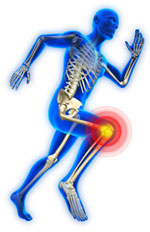Learning about your Field:
Physical Therapy first interested me when my brother had to
go some sessions for his broken foot. I went with him a few times just to check
it all out and I ended up not wanting to leave. I love to do and experience
things "hands on" and that is exactly what Physical Therapy is. .What
I have learned about my field of Physical Therapy from researching for my blog
is that it is a continuously growing field that utilizes new technology as it
comes, and that no matter what the patient will always come first.
The
use of new technology to help increase the success of Physical Therapy is very
big within the field. "Bright minds at West Health Institute in San Diego
have developed a technology that allows patients in need of physical therapy to
perform necessary exercises away from their expert guidance through the use of
Microsoft Kinect"(Stango, P1) The Kinect can read your body movements and
give you tips on how to do certain exercises correctly. Because of the new
technology the Kinect gives us patients can do physical therapy out of their
homes. As I have stated multiple times throughout my blog, I have learned that
in physical therapy, as well as all professions within the medical field, the
patients always come first. The American Physical Therapy Association released
a code of ethics for Physical Therapy and within that code stated “Physical
Therapists adhere to the core values of the profession and shall act in the
best interests of patients/clients over the interests of the physical
therapist."(APTA, 2A) I believe this statement that Physical Therapists
should put their own self-interests aside in order for them to properly care
for the patient and do what is in their best interest. I think that if Physical
Therapists put their own interests first then you would see longer
rehabilitation periods for patients. I have always liked to help others for as
long as I can remember. This is one of the main reasons why I am interested in
this field of work.
Learning about your Research:
My blogging experience has helped
me to understand how my field works and what happens within the field of
Physical Therapy. Throughout my research I have learned that there are many
ways to go through Physical Therapy and that it takes time and patience to get
through it on top. Not only does the Physical Therapist need to work with the
patient but the patient needs to work with the Physical Therapist. What I mean
by this is that the PT (Physical Therapist) needs to know and understand
everything that is happening with the patient while they are doing an exercise
so that the PT can make sure that the exercises are working correctly and
safely.
When I first go into Physical
Therapy I thought that was it, I want to be a Physical Therapist. But as I got
farther and farther into my research I realized that there are different sub
groups of Physical Therapy. Some of them are Neurological Therapy, Orthopedic
Therapy, Geriatric Therapy, and also Pediatric Physical Therapy. After
researching I am not quite sure what I want to go into specifically, but there
is a lot of time to find out. My aunt Paula was an Occupational Physical
Therapist working specifically on head trauma victims. I have spoken to her
about her career and it interests me a lot. I am taking a Psychology class
right now and learning about the human brain is fascinating. To be able to work
with both Physical Therapy and the brain would be very neat.
Throughout my research I think that I did lots of things correct. I
think that was able to connect what I learned with my own personal feelings on
the topic, and I was able to connect to different topics within. I also thought
that I always gave credit to the correct person and never took credit for that
which was not mine. That being said, I was not perfect with my research blog.
Sometimes it was very difficult to find something to talk about with my blog
and when I did I think that I was not as informative as I could have been. Some
questions that I still have for the field of Physical Therapy are: How easy is
it to find a job after school? And also what is the best route to take for
setting up one’s own practice?
Works Cited:
"Kinect Can Help Doctors Monitor Your Physical Rehab
From Home." Gizmodo. N.p., n.d. Web. 15 Nov. 2012.
<http://gizmodo.com/5946737/kinect-can-doctors-monitor-your-physical-rehab-from-home>.
"Code of Ethics for the Physical Therapist
(2010)." Welcome. N.p., n.d. Web. 15 Nov. 2012.
<http://ethics.iit.edu/ecodes/node/4839>.



